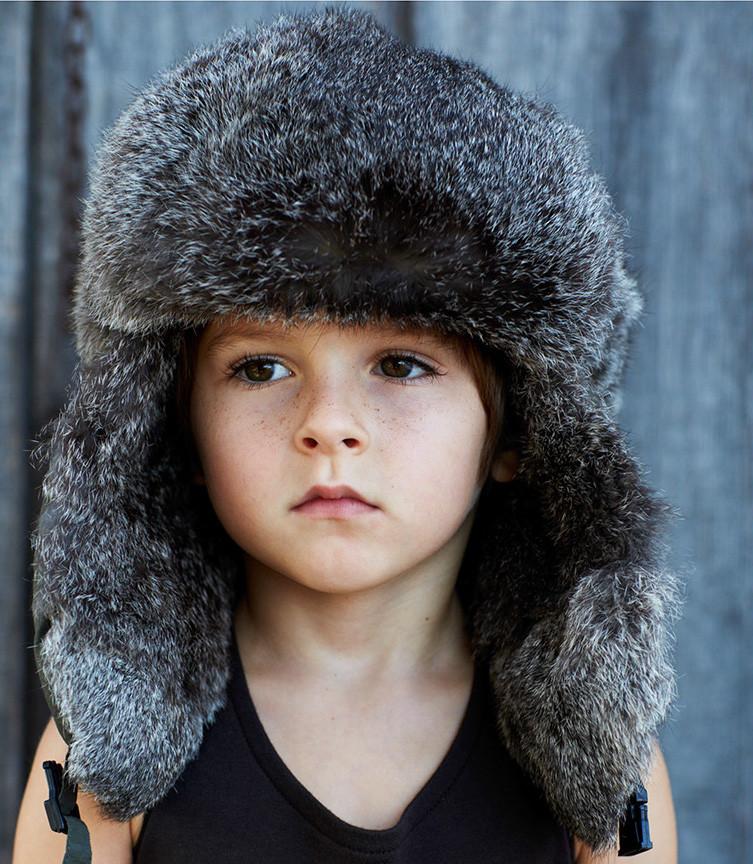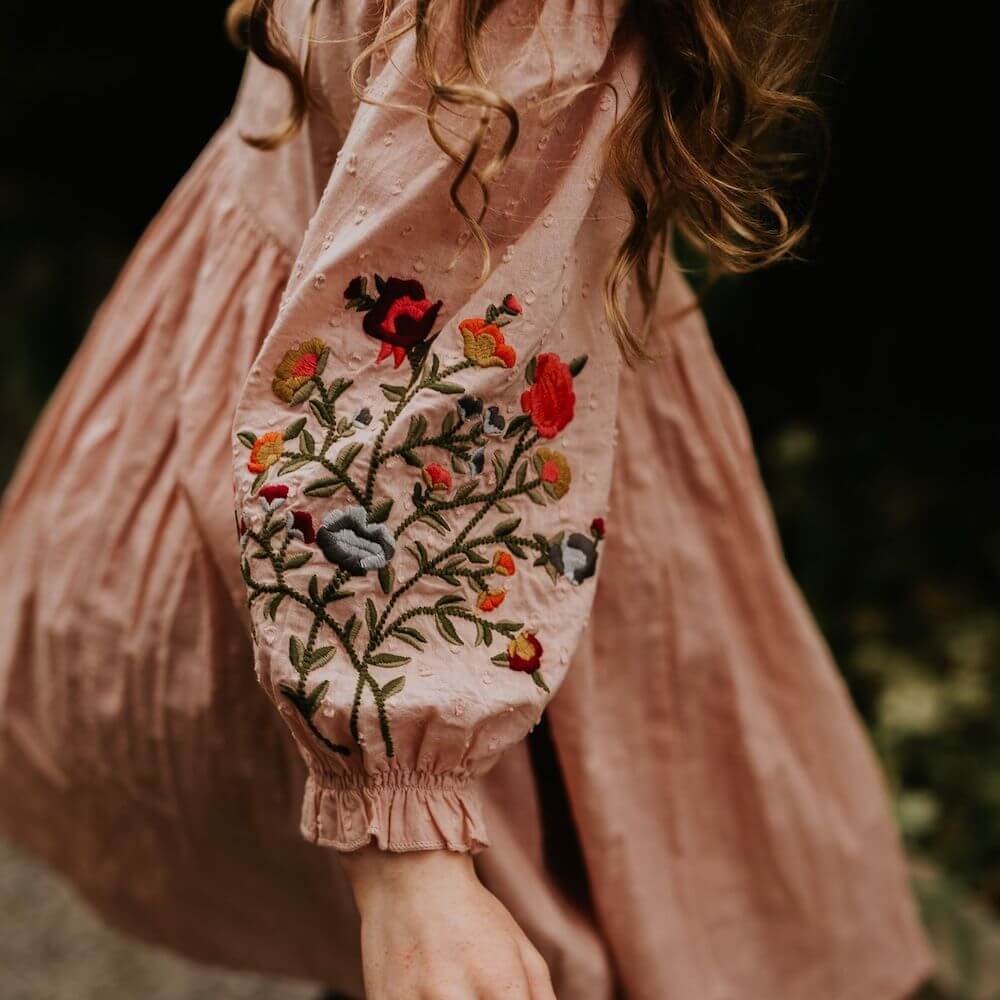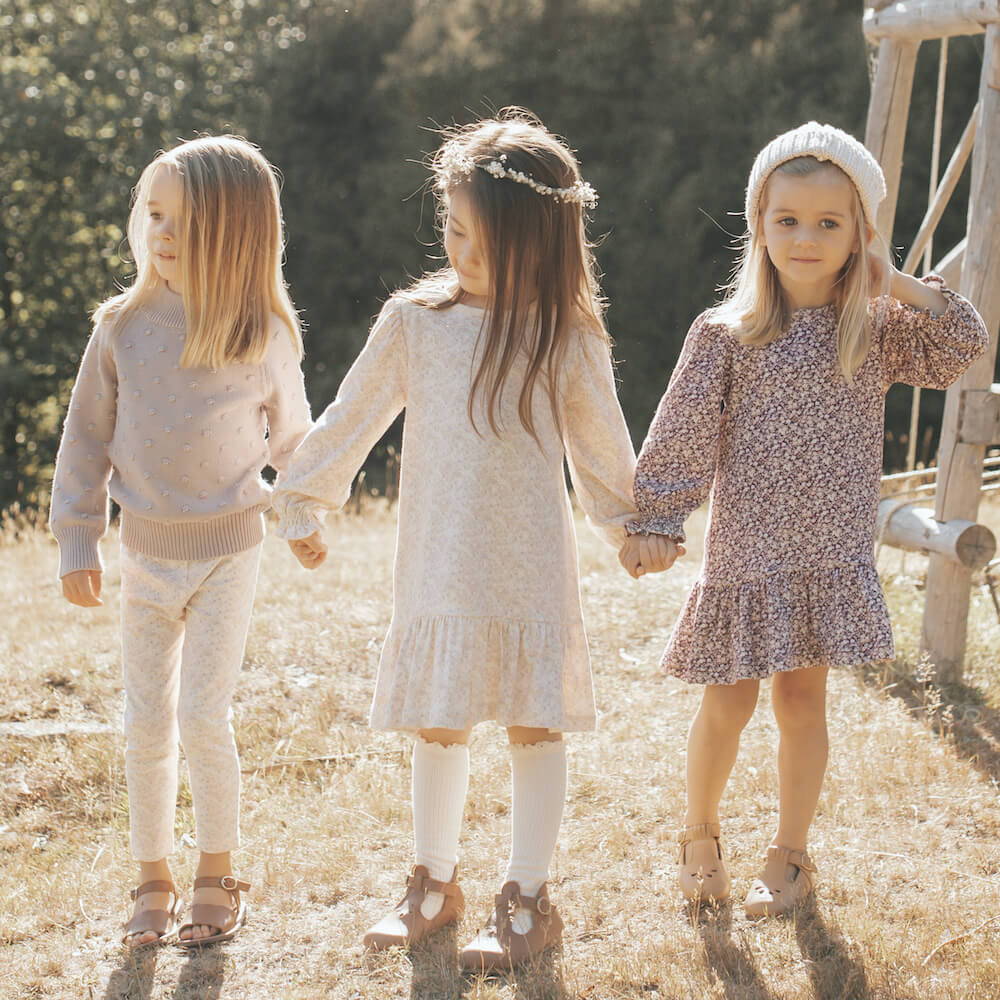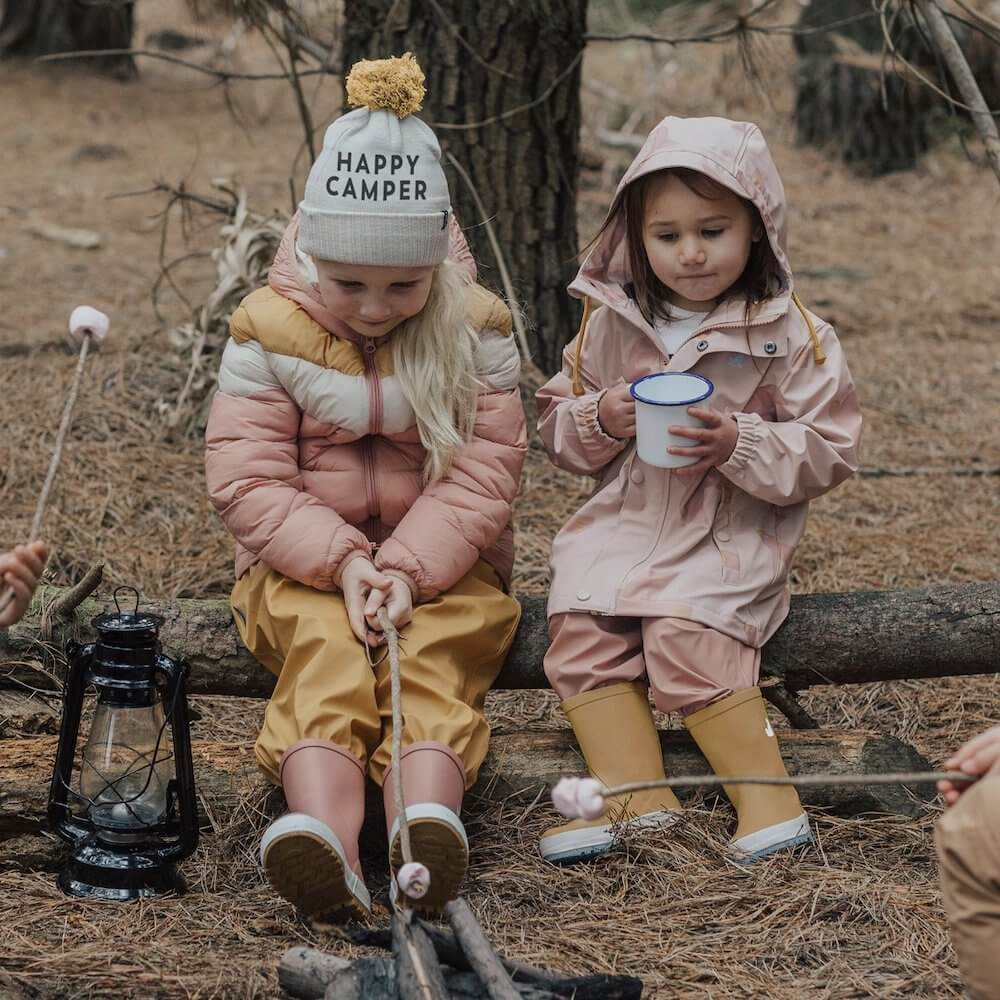Getting Ready for Winter
The mercury is dropping; winter will be upon us in no time.
While winter undoubtedly brings it challenges in the form of wet and cold weather, it also has a lot to offer.
Cosy nights by the fire.
Long days at the snow.
The excuse to add to your wardrobe.
When it comes to beating the cold, the most important thing is to ensure you and your children have the right clothes. Warm clothing will shield your kids from even the coldest weather, allowing them to get outside and enjoy the fresh air that winter brings!
Here at Tinypeople, we love winter (and not just because of Byron Bay’s mild climate). We love winter fashion; trendy jeans, stylish jackets and cute accessories to keep little heads, hands and feet toasty. We’ve gone to great lengths deciding which items should comprise our winter collection; we know you and your kids are bound to love them.
Here, we delve into some hot topics that arise as the temperature cools – including what clothes to wear, winter health and safety tips, and even how to keep the kids entertained!
Read on if you want to get ready for winter...
How to keep the kids warm
Keeping your kids warm on those cold winter days can be a challenge. When outside playing, they tend to ignore the freezing air and fail to realise just how cold they actually are. Even seen a child enjoy the beach or the pool far longer than the weather intended? That’s because they often don’t feel the cold!
However, just because they don’t think they are cold, doesn’t mean their little bodies aren’t freezing. As parents, it’s up to us to ensure they are protected from the cold by dressing them in weather appropriate clothing and footwear.
So how do you keep your child warm when it’s windy, wet and cold?
Layer their clothing
One of the best ways to stay warm in winter is to layer clothing; it not only helps to retain heat, but also gives you greater flexibility should the temperature rise, as you can always take a layer off.
When heading outdoors, it is best to wear a base layer (ideally made from merino wool) that is designed to wick away moisture, followed by a middle layer that traps heat and a waterproof outer layer that is designed to protect you from the elements (e.g. wind and rain). As a general rule in cold weather, you should dress young children and babies in one more layer than an adult would normally wear in the conditions.
1. Base layers (the layer right next to your child’s skin)
- Function: wicks moisture
- Materials to look for: merino wool is best, otherwise a synthetic fabric such as polyester
- The right fit: snug
2. Middle layers (goes over the base layer)
- Function: insulates
- Materials to look for: wool, wool blends, down or fleece
- The right fit: close to body without restricting movement
3. Outer layer (the outermost layer)
- Function: protects your child from rain, snow and wind
- Materials to look for: a waterproof jacket or shell; outerwear that’s also breathable (such as those made from Gore-Tex) are ideal if your child is active
- The right fit: allows easy movement and has plenty of room for layers underneath
Knitwear provides an excellent middle layer for children. Soft, stylish, breathable and warm, it is perfect over a light top or underneath a weatherproof jacket. Bella & Lace’s collection of new season knitwear for girls is simply gorgeous!

Girls’ knitwear by Bella & Lace.
Keep their head warm
You may have heard people say that you lose more heat via your head than any other part of your body.
Even though your head might not feel cold, it could be losing a lot of heat. Why? Because your body sends more heat to your head than any other part of your body in order to protect your brain. Your body will literally let any other body part freeze before your head does – starting with your hands and feet!
With this being the case, it becomes apparent why warm headgear is so important when your kids are outside during the winter months. By keeping your child’s head warm, you stop heat escaping and thereby keep the rest of their body warmer. This is particularly important for babies and toddlers who are yet to sprout a head of hair to keep them warm!
If you’re looking for a way to keep your kids’ heads warm this winter, we recommend our collection of children’s beanies by Munster Kids, I Dig Denim, Soft Gallery and Bobo Choses. These beautiful beanies range from soft 100% cotton knits to warm wool/acrylic blends.

Munster Kids ‘Eddie’ beanie in 100% cotton knit fabric.
There’s no better way to keep the heat in this winter!
Invest in winter footwear
When the weather becomes wet and cold, it’s important to choose appropriate footwear for both you and your kids.
Sturdy, non slip soles are essential as wet pavement and tiles can become slippery. It’s also crucial that shoes are waterproof; waterproofed leather is the best option in most cases. Leather is warm and breathable, ensuring feet stay snug and dry.

Rubber gumboots are essential when it is wet, but unless they are lined the rubber alone doesn’t keep feet all that warm in very cold conditions. It’s also important to note that unlike leather, rubber isn’t breathable and therefore feet tend to sweat and become damp in gumboots over time. That being said, every child needs a pair of sturdy gumboots in their winter wardrobe!

Opt for clothes that facilitate movement
While it is important to keep kids warm when they are playing outside in winter, it’s also critical to make sure they can still move with ease. There is no point bundling them up in warm clothes that restrict movement and make it hard for them to climb, run and play.
It’s also a good idea to pick clothes – especially tops – that are easy to remove. As kids play, they often get hot and it becomes necessary to remove layers. Taking this into account, it becomes apparent why zips are such a great idea!

Opt for clothes that are easy to remove, such as this zip-up lined vest by Alphabet Soup.
Choose mittens for toddlers
When it comes to young children and toddlers who don’t necessarily need their fingers free when outside, opt for mittens rather than gloves with individual fingers. Why? Because they are much easier to put on (have you ever tried getting a toddler’s hands into individual glove fingers?) and actually keep hands warmer since the child’s fingers benefit from each other’s warmth.
The best winter fabrics
When it comes to selecting the right clothes for those cooler winter months, it’s important to take into consideration the fabric they are made from. Different fabrics possess different thermal qualities and thus some will keep you and your child warmer than others when that cold winter wind begins to blow.
So what are the best fabrics when it comes to keeping warm this winter?
Wool
It probably comes as no surprise that wool is one of the best winter choices. This ‘super fibre’ has been used to make fabric for hundreds of years; it offers excellent thermal properties, keeping us cool in summer and warm in winter. This natural fibre is incredibly breathable, which means that it will keep you warm whilst also wicking away moisture so that you stay dry.
Woollen fabrics are used in a wide range of different clothes, from knitted jumpers, beanies and scarves, through to woven jackets and pants. Some find that wool fibres can be a little itchy if worn in direct contact with the skin, so it’s best to choose woollen clothing that is lined – or wear a light under layer beneath.
It’s also important to note than many fabrics containing wool are actually wool blends – that is, they are comprised of a percentage of other fibres such as polyester, acrylic and nylon. Try to choose fabrics that have a higher percentage of wool (if not 100%) and avoid any that are more than 50% acrylic – these are generally the knitted jumpers that are more prone to ‘pilling’ after just one wash.
Flannel
Also referred to as flannelette, this often-chequered fabric is no longer limited to lumberjacks – it’s actually an on-trend fabric worn by celebrities and cool kids alike!
Flannel can be made from various different materials, such as wool, cotton and even synthetics, and it varies in terms of thickness and feel. As such, the warmth of a flannel top can vary considerably.
If you are looking for a flannel shirt to keep your child warm this winter, try to choose one that is made from natural fibres such as cotton.

Fleece
Polar fleece is a great synthetic alternative for those who prefer not to use animal by-products. Made partially from recycled plastic bottles, polar fleece is soft, wearable and suited to a wide range of garments.
Comfortable, light weight and warm, polar fleece is a great option for children – however, if you want fleecy clothing to last be sure to choose quality garments.
Entertainment for kids
While it’s easy to find activities that appeal during the warm, sunny days of summer, winter leaves us feeling less than motivated to go outside.
Despite this, children still require entertainment – not to mention exercise! So how do you keep your child entertained on those long, grey weekends when the sun fails to shine? The following are some indoor and outdoor activity ideas that are sure to appeal to kids of all ages.
Get outdoors

Embrace the changing of the seasons. Show your child how the beach looks on a cool winter’s day, take a walk through the park and discover how the creeks change after rain – and don’t forget to don some gumboots and make the most of those winter puddles!
Visit an indoor play centre
Indoor play centres provide a wide range of options and are a great place for kids to release a bit of pent-up energy when the weather isn’t being cooperative. From Melbourne’sKids Space, Sydney’sMonkey Mania (also with a Melbourne centre) and Brisbane’s suite ofindoor play centres, to the nationwide indoor trampoline centres run byBounce Inc., there are plenty of options if the weather is making it hard to get outside!
Winter sports
Keeping kids active and healthy during the winter months is important – especially once they are old enough to run around and play with others.
If your kids are interested in playing organised sport, there are many options available over the winter months – such as AFL, netball, soccer, rugby league and rugby union.
Of course, there is always the option to go to the snow (although it is quite an expensive exercise these days.). While older kids might like to try their hand at skiing and snowboarding, little ones are often thrilled to play in the snow and ride a toboggan for the first time.
In Victoria,Mount Buller,Mount Hotham andFalls Creek generally deliver excellent snow conditions, while Mount Buffalo,Mount Baw Baw and even places such as Mount Macedon and the Dandenong Ranges are ideal for light hearted snow play. In New South Wales,Perisher,Thredbo,Charlotte Pass (Australia’s highest resort) andSelwyn (the most family-friendly option) are the pick of the bunch.
Winter health and safety
The cooler weather isn’t without its health and safety concerns – and no, we’re not just talking about the increased incidence of the common cold! From ensuring your kids remain hydrated, through to watching out for frostbite at the snow, there are a number of things to keep an eye out for over the winter months.
Keep kids hydrated
Keeping yourself and your children hydrated is certainly something that comes to mind during hot weather. However, when the mercury drops many of us forget to drink as much as we should.
When you are outside in the cold air breathing hard, you actually lose a lot of water via your breath – so it’s therefore important to keep drinking, especially if the kids are playing winter sports.
Of course, the kids probably won’t feel like an ice-cold drink in winter – so think warm drinks and soups with plenty of liquid that will keep them hydrated. Warm drinks not only work to keep kids hydrated, but also warm them up too. Of course, water is essential as well – there’s just no need to put it in the fridge!
Beware of clothing hazards
While it’s unlikely the clothing you choose for your child will create any issues, it’s always a good idea to remain aware of potential hazards.
While it’s very important to keep your children warm, scarves and hood strings can present as choking/strangulation hazards for very young children and babies and it is therefore best to seek safe alternatives.
Frostbite
In most parts of Australia, frostbite isn’t a problem parents need to worry about. However, if you live in a particularly cold part of the country or are planning a trip to the snow this season, it pays to understand this nasty ailment.
Frostbite is more than just cold hands and feet; it occurs when the body’s tissue actually freezes, and it can cause serious damage to the face, hands and feet. The best way to prevent frostbite is to cover up (think beanies, mittens and boots, as well as a face mask if you’re at the snow) and avoid spending prolonged time outdoors in freezing weather.
What does frostbite look like?
When skin begins to develop frostbite, it becomes shiny and grey – gradually darkening as the frostbite worsens. It’s important to note that in the early stages, these symptoms may not be visible. If your child can’t feel their hands, feet, nose and ears, or their extremities are sore to the touch due to the cold, then it’s time to go inside.
If you suspect that frostbite could be an issue, it’s crucial to seek medical assistance immediately as it’s a serious condition.
Ward of illness
During the colder months, viruses such as influenza and the common cold run rampant.
The problem with these viruses is the fact that they are airborne; if your child takes a breath of air while in the vicinity of someone who is sick, they could potentially end up sick as well. Since many of these viruses are contagious before symptoms arise, it’s impossible to avoid exposure.
 The best thing to do is observe good hygiene; wash your child’s hands regularly, especially when they’ve just gotten home from day care, kinder or school. It’s also a good idea to try and discourage them from touching their face. In addition, it’s also important to stay healthy and get the right nutrients – especially vitamin C. A balanced, healthy diet is one of the best ways to protect against illness, as is staying active and getting plenty of sleep.
The best thing to do is observe good hygiene; wash your child’s hands regularly, especially when they’ve just gotten home from day care, kinder or school. It’s also a good idea to try and discourage them from touching their face. In addition, it’s also important to stay healthy and get the right nutrients – especially vitamin C. A balanced, healthy diet is one of the best ways to protect against illness, as is staying active and getting plenty of sleep.
Of course, it’s also important to make sure you look after yourself when winter descends – after all, if you get sick your kids are likely to end up with it as well! Eat well, dress warmly, rest up when possible and consider getting the flu shot – there are plenty of ways to ward off those nasty winter bugs!
Does cold air make you sick?
Although many people believe that the cold air makes us sick, this simply isn’t true – we catch viruses off others who are contagious. It is the virus that makes us sick, not the cold weather.
So where did this myth come from?
Recent research from Yale University has finally shed some light on why we tend to get sick more often over winter. As reported in theNew York Times, the cells in the lining of the nose aren’t as effective at resisting the common cold (rhinovirus) when the temperature drops. Normally, infected cells warn surrounding cells, allowing them to prepare and fight off the rhinovirus. However, in the cooler weather these neighbouring cells only manage a weak defence, allowing the rhinovirus to invade.
So while cold air alone won’t make your kids sick, it can increase their chance of catching the common cold if the virus happens to be around.
Keeping warm is easy!
At Tinypeople, we’re lucky enough to enjoy northern NSW’s very mild coastal climate. Yes, it does get a little cooler in July – however the average daily maximum is still relatively warm at 19°C. We certainly don’t have to worry about the kids getting frostbite here!
However, we know that other parts of the country – such as Tasmania and parts of Victoria and southern New South Wales – do get quite nippy over the cooler months. For that reason, we stock plenty of warm kids’ clothes to meet the needs of our cooler neighbours.
Keeping both you and your kids warm this winter is easy. After all, there is no such thing as bad weather – only bad clothing! If your kids are equipped with the right threads – for example warm under layers, a weatherproof jacket and accessories such as hats, neck warmers and gloves – then you will find that the cold doesn’t pose a problem at all!




